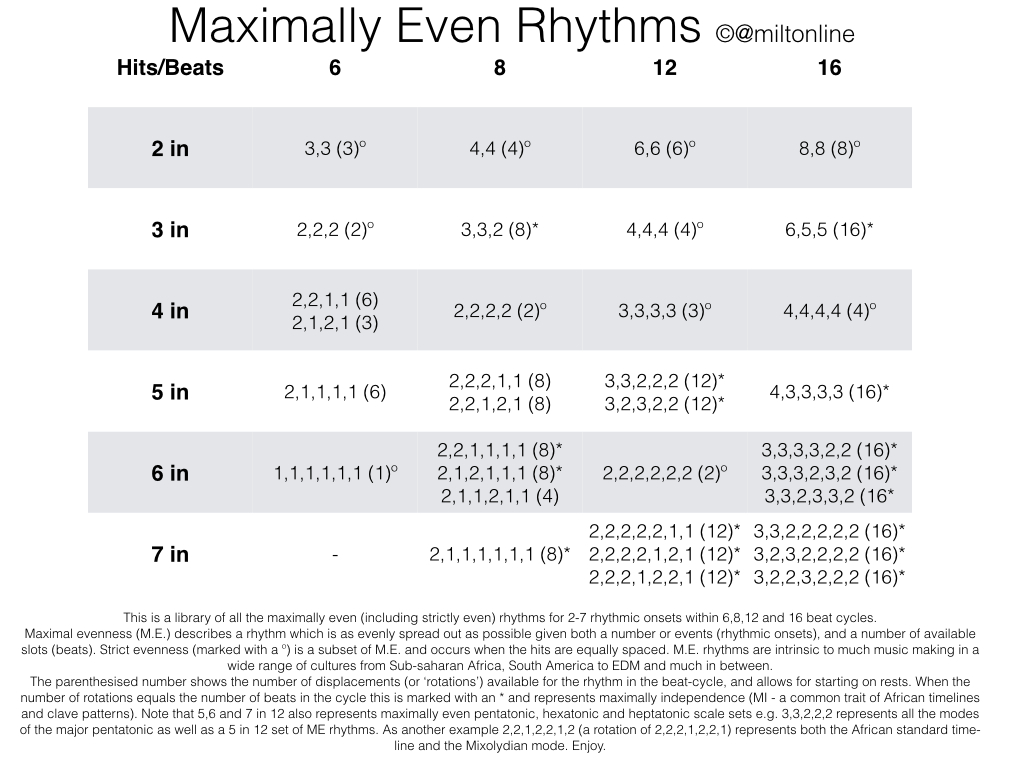An incredible experience providing the keynote presentation at the Hong Kong Academy of the Performing Arts as part of the 3rd Altamira Guitar Symposium and International Guitar Research Conference. The paper Nuages: Rhythmic Diffusion in the music of Roland Dyens explores the extraordinary rhythmic sensibilities of the recently departed guitarist/composer, and was an honour to be given the opportunity for such a tribute, in such an amazing venue among such company.
Tag: rhythm
On Friday 23rd March, I’ll be giving an Ableton-hosted workshop at the CCA, Glasgow on Breaking 4/4 – rhythmic shenanigans galore.
Booking here and details below.

Renowned TedX Groningen and Ableton Loop keynote speaker, Dr Milton Mermikides and Ableton Certified Trainer Phelan Kane take a look at some less than conventional ways to generate rhythms and sound. Using Live and custom Max for Live devices, this workshop introduces a range of tools and methods to break out of standard repetitive cycles of electronic music composition. Through a series of exercises using custom-built Max for Live devices, they’ll explore Euclidean sequencers, odd meter, micro timing, hypermeter, swing and latency, with the aim of unleashing your creativity and exploring uncharted territory beyond the standard 4/4 landscape.
Maximally Even Library
UPDATE- Since the publication of Brad Osborn’s Kid Algebra (2014), I’m going to switch to his category of Euclidean rhythms (in their 4 types) to describe the patterns below. In summary, Euclidean rhythms (ER) are rhythms in which k onsets in n divisions are as similar as possible, which essentially means that they will only differ by at most one subdivision each. So in ER the groups are as similar as possible, but the term maximally even we will reserve for ER rhythms where the smaller note groups are as separated as much as possible. For example, (2,2,3,3) and (2,3,2,3) are both ER, but only the latter is maximally even.
This is a library of all the maximally even (including strictly even) rhythms for 2-7 rhythmic onsets within 6,8,12 and 16 beat cycles.
Maximal evenness (M.E.) describes a rhythm which is as evenly spread out as possible given both a number or events (rhythmic onsets), and a number of available slots (beats). Strict evenness (marked with a º) is a subset of M.E. and occurs when the hits are equally spaced. M.E. rhythms are intrinsic to much music making in a wide range of cultures from Sub-saharan Africa, South America to EDM and much in between.
The parenthesised number shows the number of displacements (or ‘rotations’) available for the rhythm in the beat-cycle, and allows for starting on rests. When the number of rotations equals the number of beats in the cycle this is marked with an * and represents maximally independence (MI – a common trait of African timelines and clave patterns). Note that 5,6 and 7 in 12 also represents maximally even pentatonic, hexatonic and heptatonic scale sets e.g. 3,3,2,2,2 represents all the modes of the major pentatonic as well as a 5 in 12 set of ME rhythms. As another example 2,2,1,2,2,1,2 (a rotation of 2,2,2,1,2,2,1) represents both the African standard time-line and the Mixolydian mode. Enjoy.


